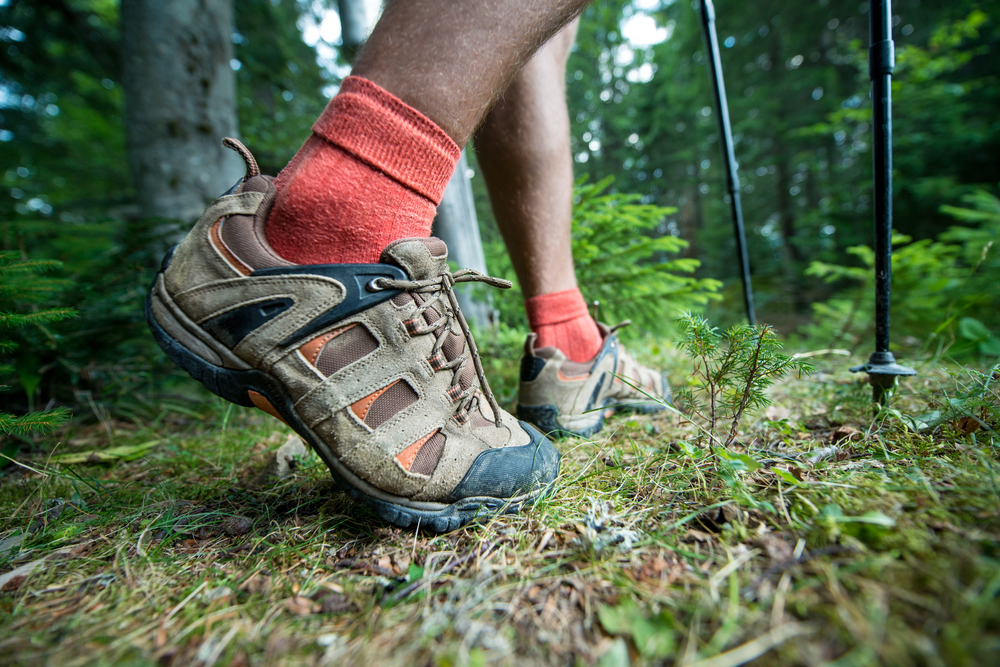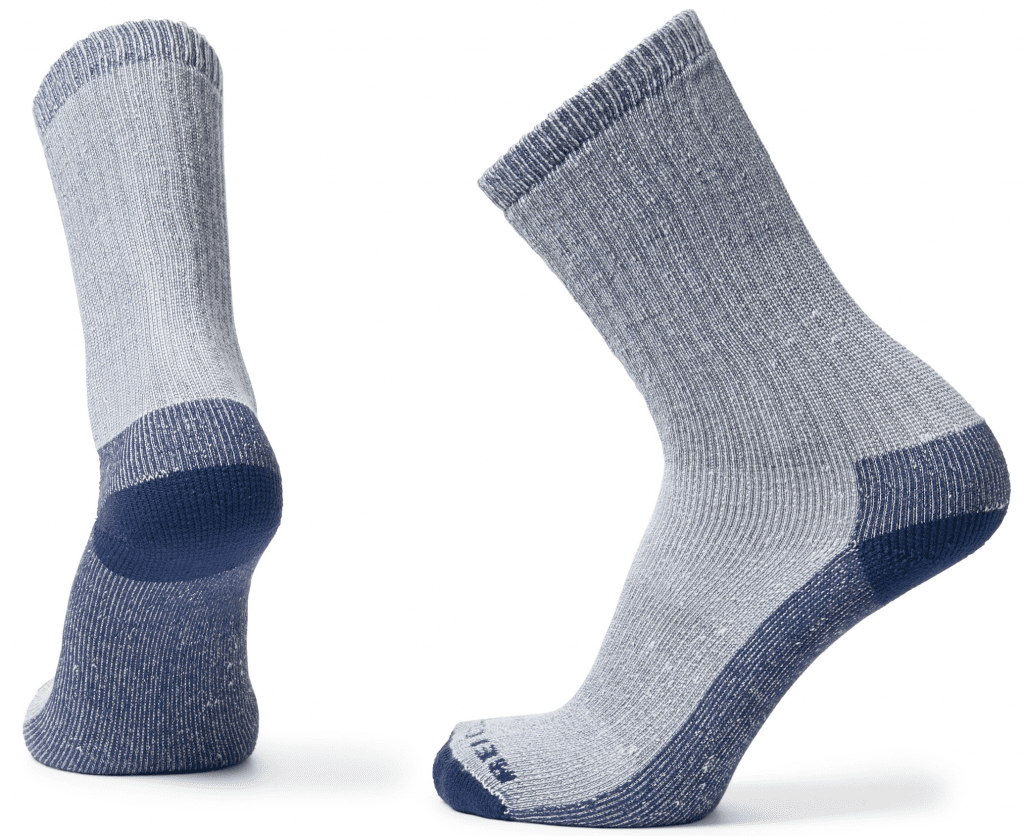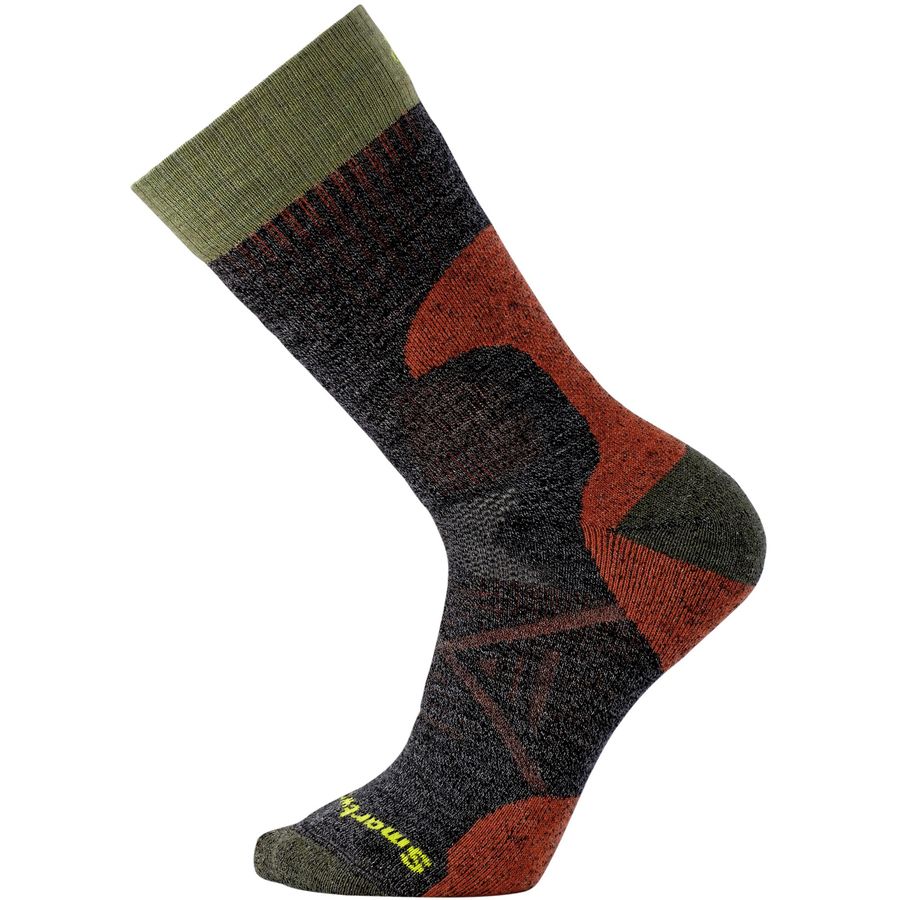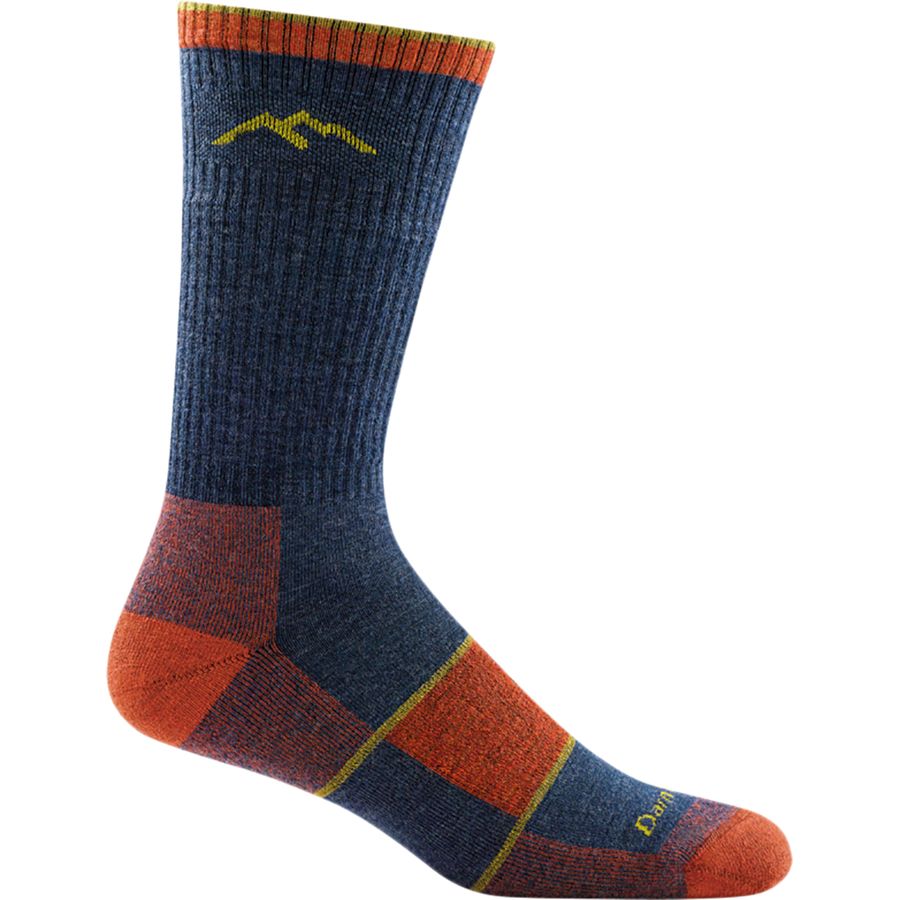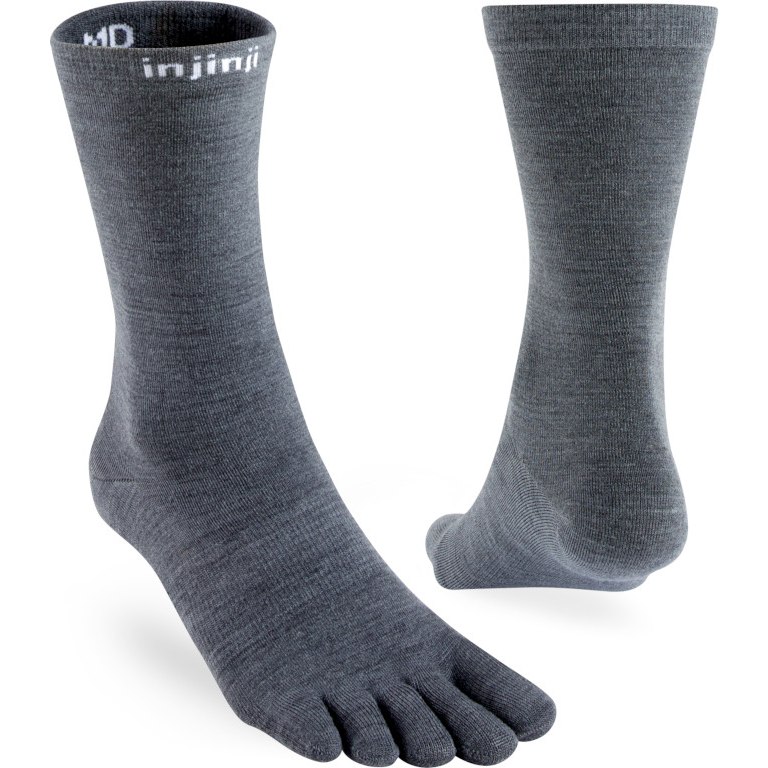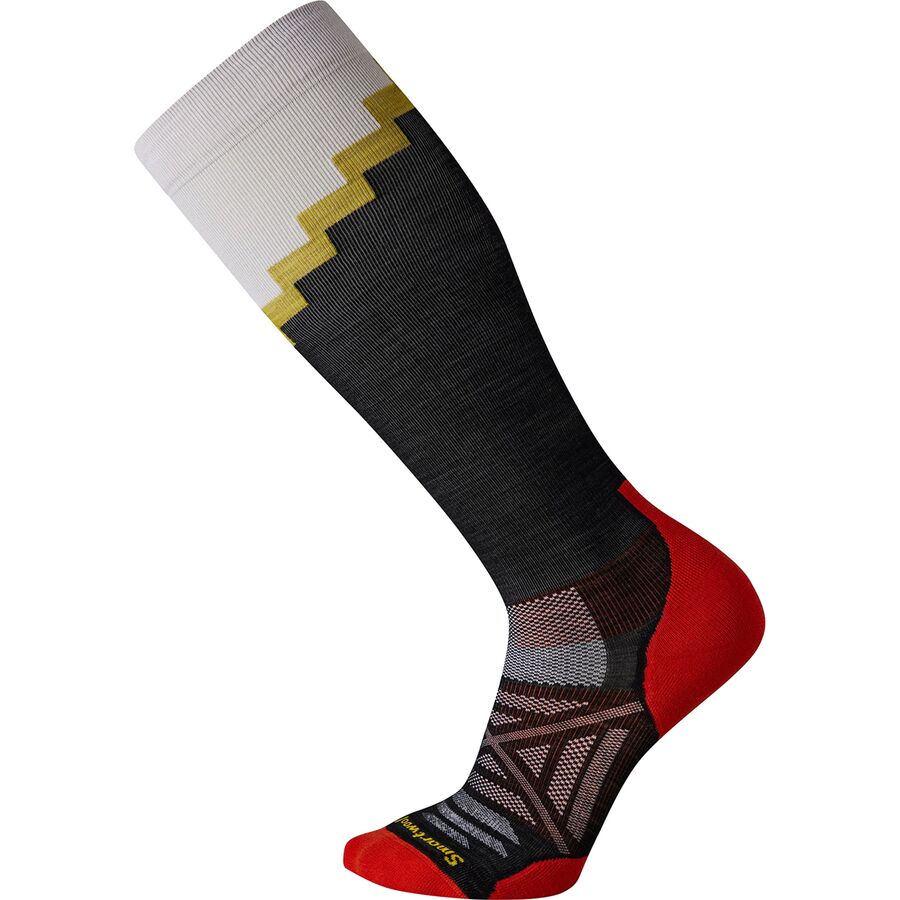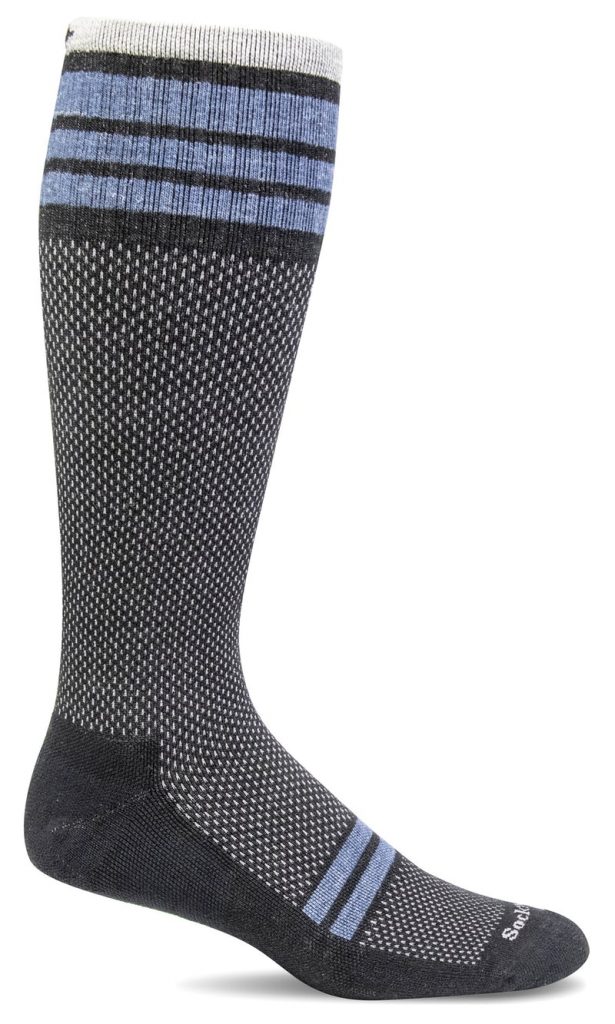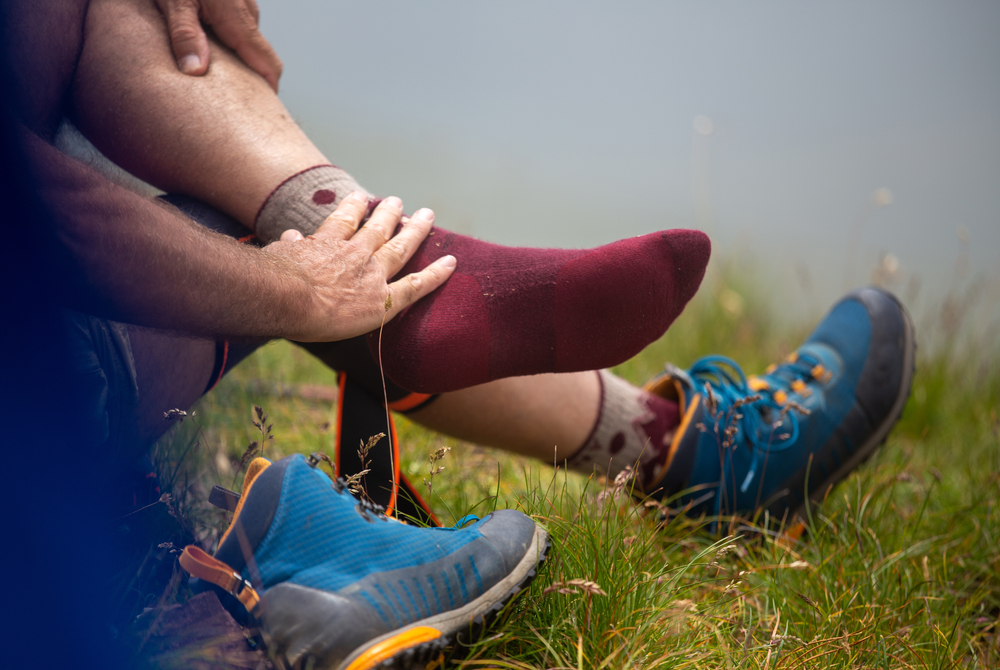
Your feet are what will get you to the top of Kilimanjaro, one step at a time.
Comfortable, broken-in boots are one of the most important pieces of gear you will need to climb the mountain. Even the best boots can’t do their job to protect your feet without socks. As anyone who has ever suffered from blisters knows, the boots and socks work together as a team.
The first factor to consider when selecting socks to climb Kilimanjaro is that they fit well on your feet. A properly fitting sock’s heel cup will line up with the heel of your foot.
You must also check that your foot fits well into your shoes or boots with the sock on. Having socks that are too tight, too loose, too thin or too thick can all cause unnecessary foot problems. Don’t bring a bad-fitting sock!
Below I will discuss what you should look for socks when climbing Kilimanjaro.
Athletic Socks vs. Hiking Socks
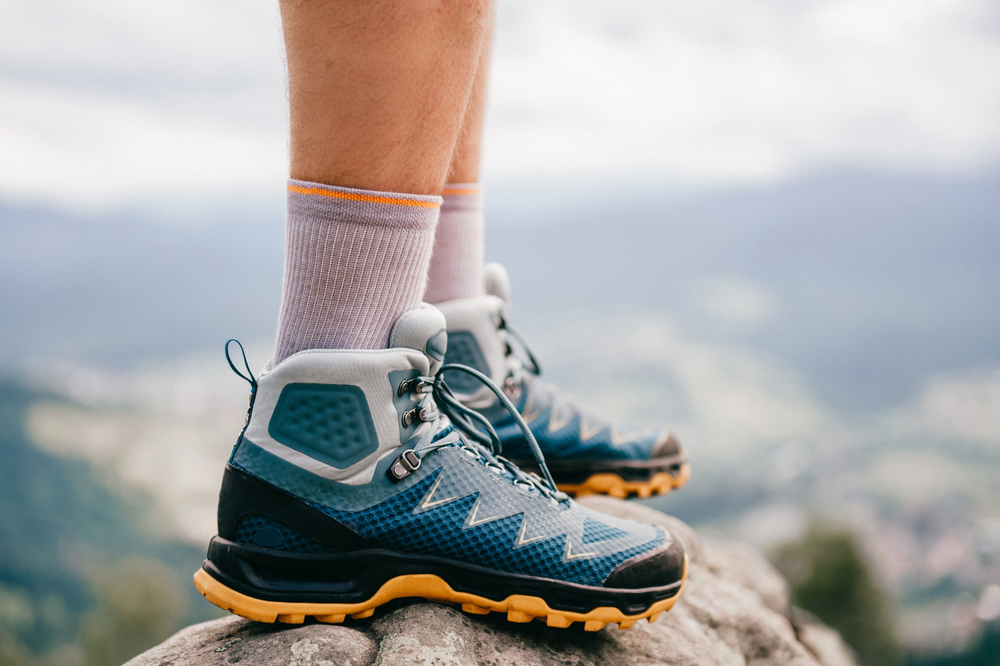
The typical athletic sock can serve you well on the trail. They are made for performance while practicing most sports and working out. Unlike dress socks or casual socks, athletic socks are designed to wick away moisture from the feet. Quality athletic socks are normally made of technical fabrics and have a snug fit to prevent the socks from moving around.
I recommend a sock that is made specifically for hiking because they will be most compatible with your footwear on the mountain. Compared to athletic socks, hiking socks have more cushioning in the front of the foot and the heel. This reduces the impact to your feet from many hours of walking over several days. Your feet will almost certainly swell up, but the added cushioning will make your feet a little less achy.
What Material Should My Socks Be Made With?
Most high quality hiking socks today are made of merino wool, a synthetic fabric like nylon or polyester, or a blend of these.
The most important function of the material is that it wicks away moisture from your feet.
Stay away from cotton socks! Once cotton gets wet it no longer provides warmth.
What Sock Thickness Do I Need for Kilimanjaro?
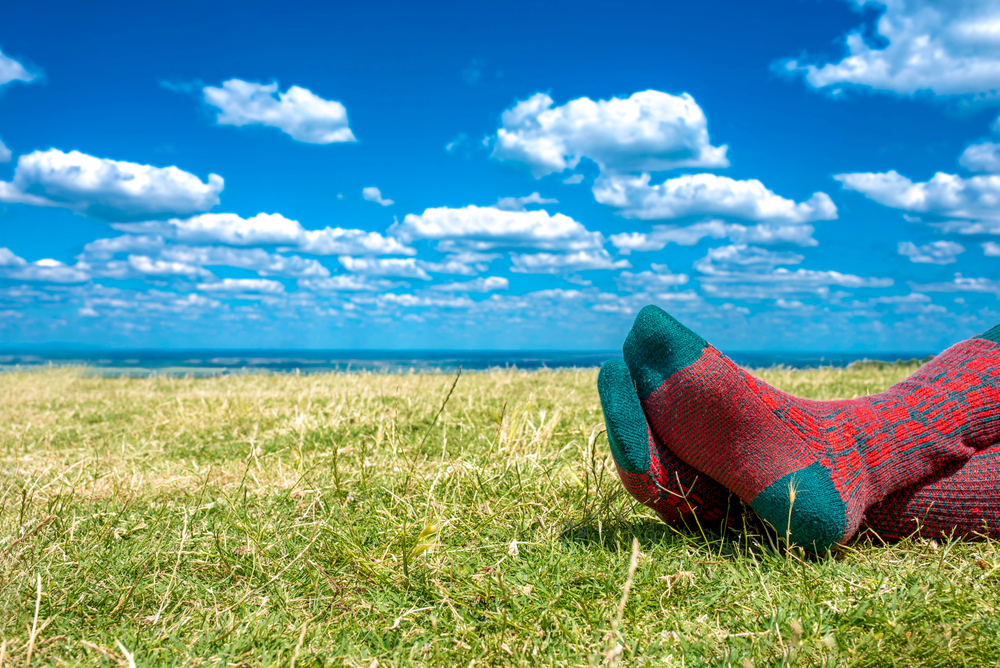
There are three sock thicknesses: lightweight, midweight and heavyweight.
Lightweight socks are made for warm or hot weather. They have some cushioning but overall they are relatively thin.
Midweight socks are made for warm to cool conditions. They have a good amount of cushioning and do not add too much volume to your foot.
Heavyweight socks are made for cold weather. They have a lot of cushioning and will make your foot noticeably larger.
For most people, midweight socks can be worn for the entire trek without issue. It is the most versatile sock and provides a balance between warmth and cushioning.
If your feet get cold pretty easily, it might be a good idea to get a pair of heavyweight socks for the summit bid.
When you try on shoes or boots, make sure you’re wearing a hiking sock.
What Sock Length is Best for Climbing Kilimanjaro?

Hiking socks come in several lengths: knee/over the calf, boot/crew, 3/4 crew, ankle and low.
I suggest boot/crew (the most popular length) or longer.
Low socks and ankle socks are simply too short to protect the skin against scrapes, bugs and weather. Shorter socks also can let dirt in and result in blisters.
Hiking Sock Recommendations
REI Co-op COOLMAX EcoMade Midweight Hiking Crew Socks
Smartwool Performance Hunt Medium Crew Sock
Darn Tough Full Boot Cushion Sock
Do I Need Liner Socks?
Liner socks are thin, tight socks that you wear between your foot and your hiking sock.
They do a good job of preventing blisters.
Keeping your feet blister free and is all about preventing friction and decreasing moisture. The liner sock wicks moisture away from your skin and it is absorbed by the hiking sock. This keeps the skin of your feet dry.
The liner sock also helps reduce the friction of your foot and hiking sock moving against each other as you walk as it introduces another, tighter layer. When worn properly, the movement in your boots would be between your liner sock and hiking sock rather than your hiking sock and skin.
Liner socks can be made of merino wool or a synthetic moisture wicking material like Coolmax. The length of the liner sock should be tall enough that they are well above the top of your footwear and any areas that might experience rubbing.
I like liner socks that are toe-socks. Keeping the toes separated prevents friction and blisters from forming between the toes. It seems counter intuitive, but toe-sock liners also keep your feet warmer than regular sock liners. Because moisture will make your feet feel colder, wicking the moisture out of the spaces between the toes keeps your toes drier and warmer than if they were all together in a regular sock.
There are disadvantages to toe-socks. If your toes are very inflexible or shaped in a way that it’s uncomfortable, then they might not be worth the extra trouble. Toe-socks do not fit everyone well.
Sock Liner Recommendations
Injinji Liner NuWool Crew Sock
Smartwool Hike Liner Crew Sock
Can I Climb Kilimanjaro With Compression Socks?
Another type of sock you might want to consider is a graduated compression sock. These socks are a thin wool or synthetic material with elastic built-in to provide compression from the foot all the way up to the knee.
Compression stockings are designed to apply pressure to the lower leg, which helps maintain blood flow and decrease discomfort and swelling. They are great for reducing fatigue in the lower leg.
While I don’t recommend using compression socks exclusively on the mountain (they are too thin for warmth and cushioning), you could use them as a complement to your other socks. You could wear compression socks as a sock liner underneath your hiking socks. You could also wear them at camp to refresh your feet after the long days of hiking.
I like to wear compression socks on the flight too, or on the rest day between the flight and a hike. They work to combat the swelling in my feet and ankles during long travel days. Then when it’s time to hike, my feet are ready!
Compression Sock Recommendations
Smartwool Athlete Edition Mountaineer Compression Sock
Sockwell Speedway Firm Compression Socks
Best Practices on Kilimanjaro
- Peak Planet recommends packing at least four pair of hiking socks and three pair of liner socks for your climb.
- Rotate between your pairs of socks for each day so they have a chance to dry out and “fluff” up between wearings.
- If you notice that your feet are wet while hiking, change into dry socks immediately.
- If you feel a blister forming, stop and take care of it. Use a bandage or athletic tape to cover the hot spot.
- If you have socks that are moist, put them inside your sleeping bag. Your body heat will dry them out overnight.
- Sleep with clean, dry socks to keep your feet warm during cold nights.
- Test your socks on real trails before your climb.
- Try different sock and sock liner combinations with your footwear. Make sure you’ve got the system that works best for you!
Socks are a small piece of gear that can make a huge difference in your comfort and the overall success of your climb.
